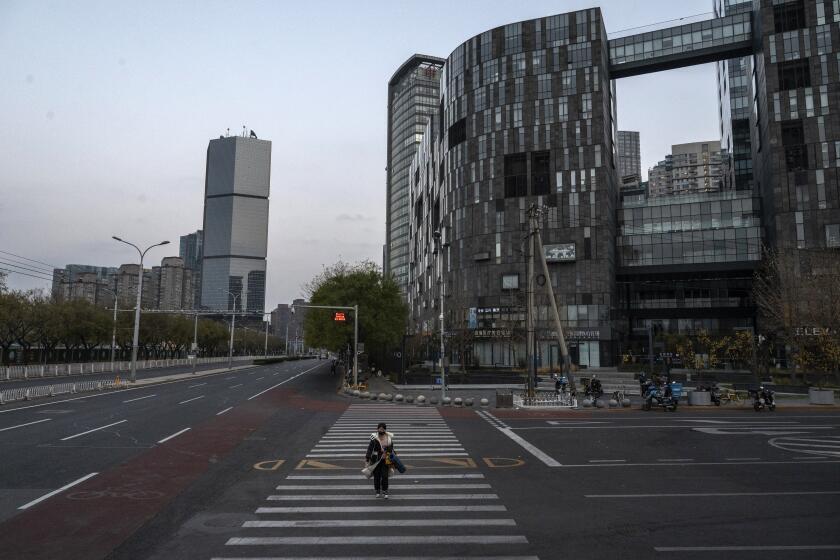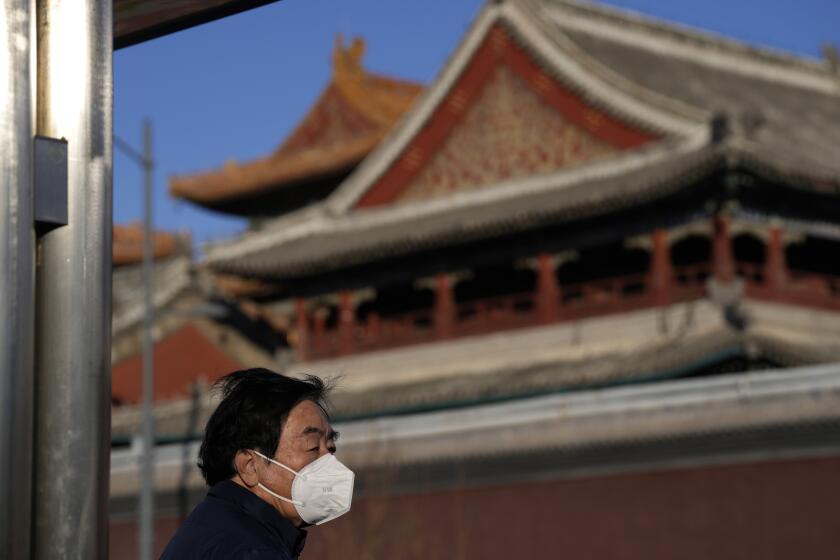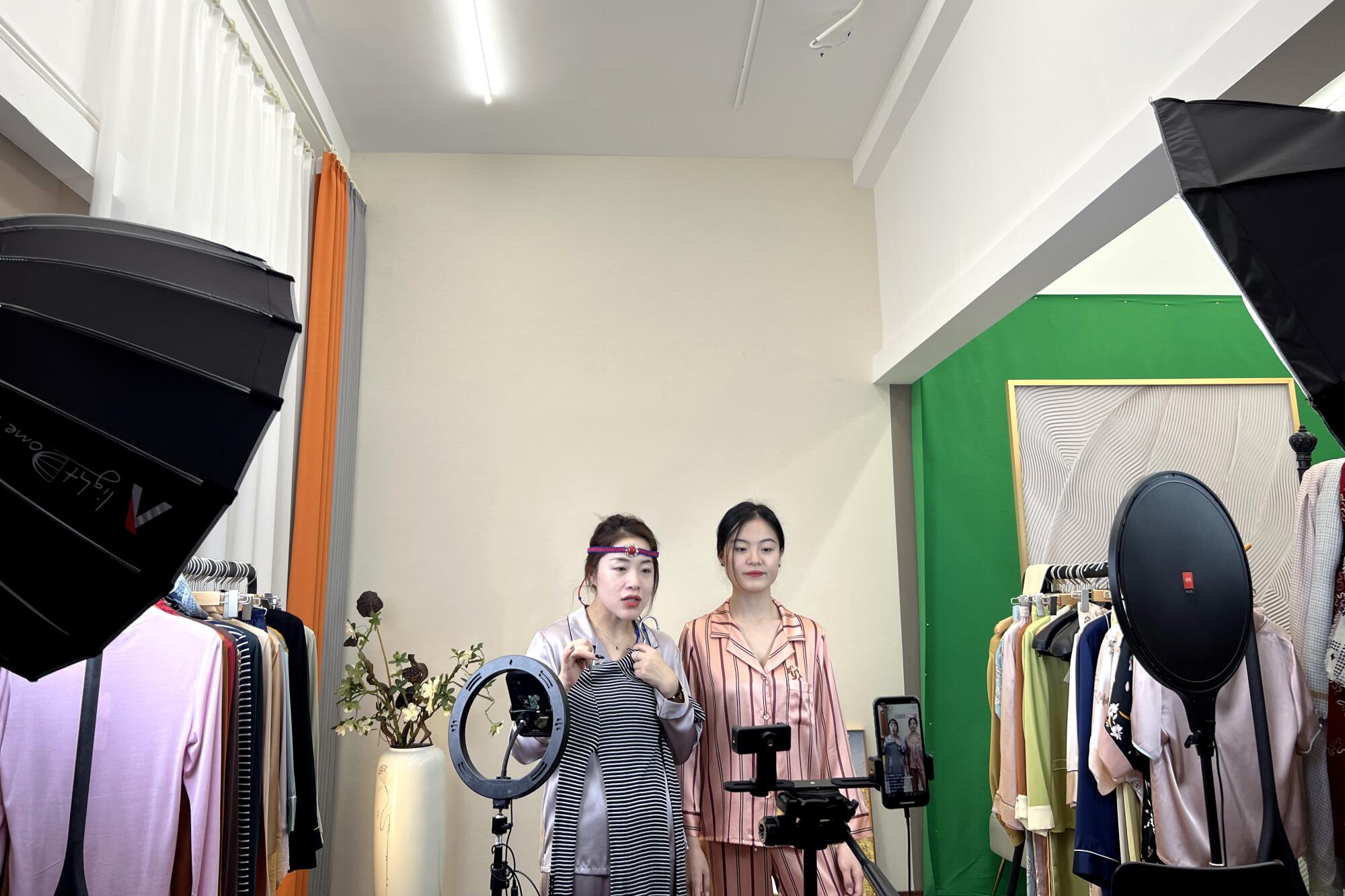
- Share via
TAIPEI, Taiwan — For nearly two decades, Bowen Tsui’s family business in China has made garments to order for foreign clients to sell overseas under their own labels. Now, he believes the company’s survival depends on whether it can design, brand and distribute clothing by itself.
About a year ago, the company began using two of its factory’s assembly lines to make men’s trousers, T-shirts and yoga pants stamped with its own name, Goodways Group. It purchased a new facility to use as a design studio, as well as a 30% stake in a Cambodian factory to manufacture men’s and women’s activewear. To sell his goods in China and Europe, Tsui hired livestream hosts to showcase products in the way of QVC and U.S. shopping channels, and he’s looking for online merchants to reach American consumers.
The transition from simply manufacturing goods to conceptualizing and branding them is a result of China’s changing economic landscape. Although the country maintains its status as the world’s factory floor, accounting for more than a quarter of global manufacturing, lower costs in places such as Vietnam and India are steadily luring operations away. At the same time, improved product quality and e-commerce channels have given manufacturers greater access to shoppers at home and overseas.
For Tsui and a majority of his friends in manufacturing, the hot topic these days is how to launch their own brands, whether for socks or pet toys or camping gear.
“All the factories are experiencing tough times,” said Tsui, 28. “This is the sun setting on our traditional business.”

As financial pressures from rent, labor and environmental regulation have increased, Tsui and his family have adopted cost-saving strategies such as opening factories in Cambodia and integrating robotics into their facilities in China’s Jiangsu province. In 2020, when the pandemic bankrupted several of the company’s foreign clients and halted orders, Tsui decided to forge ahead with the Goodways brand.
“To be honest, our domestic factories are not breaking even,” he said. “It’s almost like you have to do it.”
China’s deep manufacturing experience and vast supply chain bolster those efforts, as maturing design and production capabilities have led to higher-quality products and enabled the rise of Chinese brands domestically.
“When you’re making so many things for the entire world, undoubtedly you’re going to accumulate know-how and learn from the clients you work with,” said Rui Ma, creator of investment consulting firm Tech Buzz China. “More and more of these suppliers are becoming more like a brand.”
As China’s economy slows, more young people are exploring nomadic lifestyles in a rebuke of societal pressure to work hard, buy a home, start a family.
According to Kantar, a London-based brand consultancy, the value of China’s top 100 brands has risen 57% over the last year. Topping the list are tech giants Tencent and Alibaba, followed by liquor label Moutai and Douyin, TikTok’s sister app in China. The fastest-growing name in 2022 was Li-Ning, an athletic apparel maker that’s gained popularity in China on the back of rising nationalism and preference for home-grown brands.
But a slowing economy and a crowded market mean that Tsui and others can no longer bank as much on Chinese consumers.
The domestic market has always been cutthroat, with price wars among merchants often resulting in a race to the bottom. As economic growth plateaus, weighed down by pandemic restrictions that have driven consumer saving to a 20-year high, more companies are looking to boost sales in other countries.
The trend, known as chuhai, or “going overseas,” has accelerated as the pandemic has spurred e-commerce around the world. According to Beijing-based investment research firm EqualOcean, sales of Chinese consumer products overseas, including mobile phones, clothing, home appliances and makeup, reached $561 billion in 2021, up 20% compared with the previous year.
As financing dries up and debts come due, a cash crunch leaves thousands of homes unfinished, in a crisis with implications for the global economy.
With the allure of higher profits and government support, those products are increasingly shipping out under their own brand names, said Xing Yiran, a business analyst at EqualOcean.
“This is a new era of China going overseas,” Xing said. “They are going from that kind of, ‘We just help you make a product and stick a label on it,’ to ‘We want to make our own products.’”
Chinese companies have been emboldened to go global in the last couple of years by success stories like fast-fashion giant Shein, whose cheap and trendy clothing has exploded in popularity among TikTok users. The company was reportedly valued at more than$100 billion in April, making it one of the world’s most valuable startups.
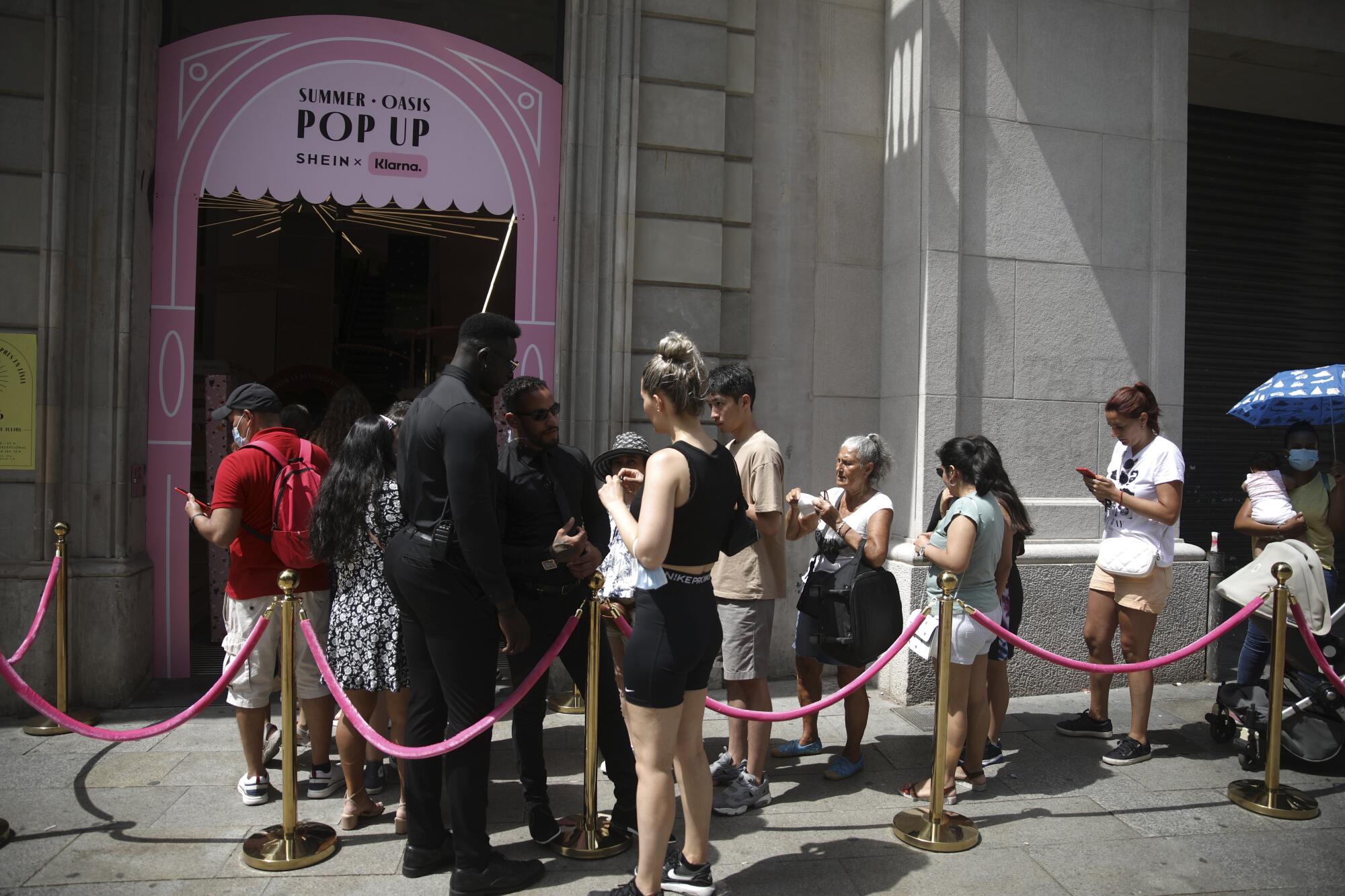
In September, the Chinese discount shopping platform Pinduoduo launched a new app, Temu, for the U.S. market. Other Chinese tech giants such as TikTok owner ByteDance and Alibaba have experimented with their own fast-fashion platforms targeting Western consumers, with mixed results.
In October, the vice president of Amazon China told Chinese media that the number of Chinese brands registered on Amazon rose 40-fold between 2018 and 2021.
“It’s the most trending topic in every coffee shop in China: Let’s do business in America and Europe,” said Wang Shuo, who worked as a brand consultant for 12 years.
In 2021, Wang founded his own brand, Psytone, selling premium press-on “Cardi B type” nails for the U.S. market, which promises growth opportunities that are becoming rarer at home.
“Markets in China are hell,” he said. “All the people in the same industry, the only thing they can do is lower the price, lower the price, lower the price. Buying power is decreasing — you cannot make money there.”
Start your day right
Sign up for Essential California for the L.A. Times biggest news, features and recommendations in your inbox six days a week.
You may occasionally receive promotional content from the Los Angeles Times.
Such ambitions are something of a role reversal for the world’s two largest economies. As China’s growth skyrocketed in the 2000s, U.S. brands jostled for a share of Chinese consumers’ newfound spending power, struggling to adapt their products to local tastes.
While China has a strong U.S. presence in consumer electronics with brands such as Huawei, Haier and Anker, other product categories like clothing and cosmetics are still finding their footing abroad.
“Huawei’s technology was already on par with many U.S. companies,” said Lin Zengsheng, senior PR manager and a founding employee of Florasis, a Chinese cosmetics brand that launched in 2017 and started selling overseas in 2021. “Chinese makeup was not at that stage, but now we think the time is ripe. Our products and branding have gotten to a pretty good point.”
Lin believes the company’s biggest challenge will be building brand recognition and balancing foreign consumer preferences with its Chinese-style aesthetic.
“We have only taken the first step,” he said. “There’s still a long way to go.”
China’s government also downgraded the official seriousness of COVID-19 and dropped a requirement for people with the virus to be quarantined.
While the number of Chinese brands on Amazon has surged, many have received complaints of inflated reviews or subpar products over the last few years. In 2021, Amazon suspended hundreds of Chinese merchants for violating its terms of service.
Such controversies illustrate one of the biggest hurdles for nascent Chinese brands targeting the overseas market: the perception that their goods are cheap, shoddy or fake.
According to a survey by market research firm Ipsos, global consumer confidence in Chinese brands increased 4% between 2019 and 2021. However, China still ranked the lowest in its confidence index compared with India, South Korea, the U.K., Japan, the U.S. and Germany.

For some startups, combating that image means putting extra emphasis on quality or promoting their business in a way that leaves out China altogether, either by marketing themselves as global brands or highlighting offices or factories in other countries.
“It is truly a tricky thing,” said Iris Guo, who last year created the brand 4T7 for her “smart” cutting boards, which come with a built-in scale and accompanying app. “If people ask, we will say we are a Chinese brand. But we won’t address it in a huge sentence on our website.”
Guo decided to initially target U.S. consumers, mostly via Amazon, to establish her brand before Chinese competitors could copy her product and sell it domestically at a cheaper price. By spring, she hopes to expand to Europe; China is a possible target by the end of 2023.
“We want to try to turn people’s thinking about how Chinese brands are low-quality copycats,” she said. “But we are a very small brand, a very small company. We cannot do that on our own.”
For Tsui and his Goodways clothing business, everything is worth trying.
The company began as a textile trading company in 1996 and started producing clothing for international brands in 2004. As early as 2013, it became clear that competition from other countries was growing, prompting the company to purchase its Cambodian facilities.
Tsui’s family even tried to expand into growing traditional Chinese medicine in Cambodia but lost all their crops after 14 days of rain. That convinced them to stick with making garments.
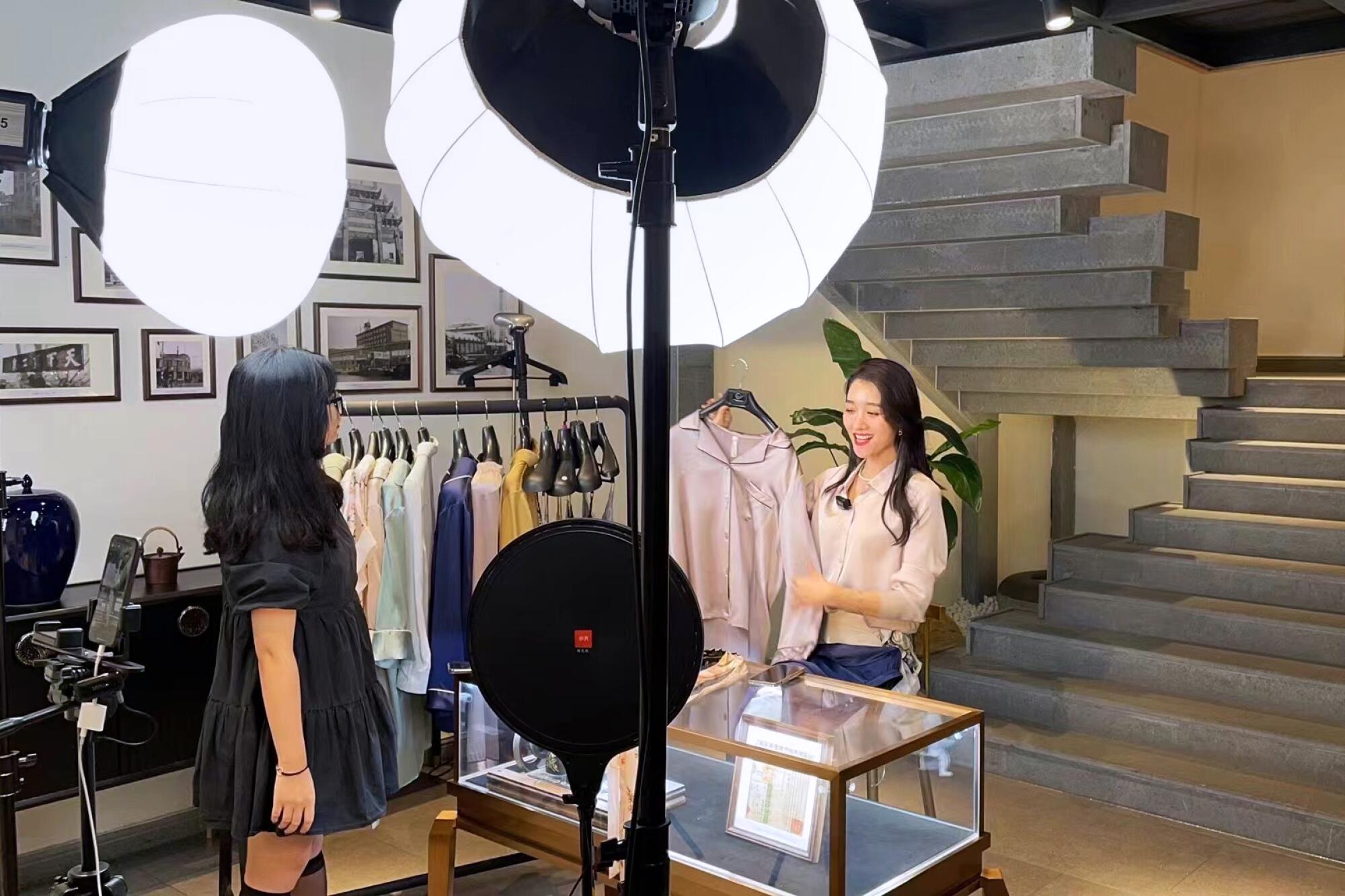
But Goodways’ own clothing line has a long way to go before it can supplant the company’s traditional source of revenue: Manufacturing for other vendors still accounts for 96% of the company’s sales, Tsui said.
Livestreaming sales promotion, a booming e-commerce trend in China, has also foundered with Western audiences. Fluent English-speaking hosts are costly and hard to find, Tsui said. And shopping via livestream has yet to take off outside China; Goodways’ European channel shut down several weeks ago from a lack of viewers.
For U.S. consumers, Tsui is debating whether to sell on Amazon, Temu or Canadian e-commerce website Shopify. On Temu, the Goodways label could have a harder time building brand recognition, while Amazon retailers are trying to negotiate lower prices, and a Shopify store would require more spending on online advertising, he said.
But he and his family are determined to make it work.
“It’s a must,” Tsui said. “Even if it’s losing money, it’s an investment, and we have to invest more.”
More to Read
Sign up for Essential California
The most important California stories and recommendations in your inbox every morning.
You may occasionally receive promotional content from the Los Angeles Times.
